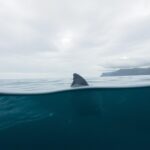When you think of Greece, images of stunning beaches and crystal-clear waters likely come to mind. But have you ever wondered if there are sharks lurking beneath the surface? The answer is yes! Greece is home to several shark species, though encounters with them are quite rare.
Most of the sharks found in Greek waters are not dangerous to humans. Species like the hammerhead and the blue shark roam the Mediterranean, but they typically prefer deeper waters far from the bustling beaches. So while you can enjoy the sun and sea without worry, it’s fascinating to know that these incredible creatures share the same waters you love.
Overview Of Sharks In Greece
Greece’s waters host various shark species, contributing to marine biodiversity. Notable species include:
| Shark Species | Habitat Preference | Size Range |
|---|---|---|
| Hammerhead Shark | Deep waters, prefers oceanic environments | Up to 20 feet |
| Blue Shark | Open ocean, also found near coasts | Up to 12 feet |
| Mako Shark | Pelagic zones, typically not near shores | Up to 12 feet |
| Nurse Shark | Coastal waters, often near reefs | Up to 10 feet |
| Thresher Shark | Deep waters, known for long upper lobe | Up to 20 feet |
Sharks generally inhabit deeper waters away from popular tourist spots. Encounters between humans and these creatures remain infrequent, with most species showing little interest in approaching the coastline.
Hammerhead sharks, characterized by their distinct head shape, usually favor offshore areas. Blue sharks, while present in the Mediterranean, typically inhabit deeper regions. Mako sharks prefer pelagic waters, operating far from beaches where you swim. Nurse sharks, however, tend to be more benign and often linger around coral reefs but are rarely seen at public beaches.
According to a 2020 study by the University of Athens, the Mediterranean Sea contains about 47 shark species, with only a fraction residing in Greek waters. Reported encounters typically involve juvenile species that pose no threat to humans.
Shark attacks in Greece are exceedingly rare. Historical data indicates an average of one incident every few years, generally involving provoked encounters. Public awareness campaigns emphasize safety while enjoying water activities. Resources such as local guides and beach patrols contribute to a safer environment for beachgoers.
You can enjoy Greece’s stunning coastlines without concern, as the likelihood of an adverse encounter with sharks remains minimal. Monitoring shark populations continues to ensure a balanced ecosystem, promoting both marine life and human safety.
Common Shark Species In Greek Waters
Greek waters host various shark species, typically favoring deeper habitats, far from popular beach areas. Understanding these species helps alleviate concerns about encounters during your time by the sea.
Mediterranean Shark Species
The Mediterranean Sea is home to several shark species. Key examples include:
| Shark Species | Average Size (Feet) | Habitat Preference |
|---|---|---|
| Hammerhead Shark | 10-13 | Open waters, deeper areas |
| Blue Shark | 10-12 | Offshore, deeper waters |
| Mako Shark | 8-12 | Pelagic zone, deep waters |
| Nurse Shark | 7-10 | Coastal areas, shallow waters |
| Thresher Shark | 10-16 | Open sea, deeper waters |
Most species, like hammerhead and blue sharks, avoid shallower areas where people swim.
Rare Encounter Species
While sharks inhabit Greek waters, encounters are infrequent. Several species that may be seen occasionally include:
| Rare Species | Average Size (Feet) | Encounter Frequency |
|---|---|---|
| Shortfin Mako | 8-12 | Rare |
| Bull Shark | 7-11 | Infrequent |
| Basking Shark | 20-26 | Very rare |
| Porbeagle Shark | 6-8 | Occasional |
Encounters typically involve juvenile sharks, which present no threat to humans. Historical data show an average of one shark attack every few years, primarily resulting from provoked situations.
Shark Behavior And Habitat
Shark behavior and habitat are crucial for understanding their presence in Greek waters. Various shark species inhabit distinct environments, influencing their interactions with potential encounters and feeding habits.
Preferred Environments
Sharks prefer diverse environments based on species. Common habitats for sharks in Greece include:
| Shark Species | Preferred Depths | Common Locations | Behavior |
|---|---|---|---|
| Hammerhead Shark | 200-500 meters | Open water | Migratory, solitary |
| Blue Shark | 100-400 meters | Deeper waters | Pelagic, often in schools |
| Nurse Shark | 0-30 meters | Coastal areas | Bottom-dwelling, nocturnal |
| Thresher Shark | 0-500 meters | Open ocean | Solitary, feeds on schooling fish |
| Mako Shark | 150-500 meters | Offshore areas | Fast-moving, migratory |
These environments reflect a preference for deeper and often less populated coastal regions, minimizing human encounters.
Feeding Habits
Sharks display various feeding habits depending on their species. These habits generally include:
| Shark Species | Diet | Feeding Time | Hunting Style |
|---|---|---|---|
| Hammerhead Shark | Fish, squid | Diurnal | Active hunter |
| Blue Shark | Fish, pelagic organisms | Diurnal | Pursues swift prey |
| Nurse Shark | Crustaceans, small fish | Nocturnal | Ambush predator |
| Thresher Shark | Fish, squid | Diurnal | Uses tail for stunning prey |
| Mako Shark | Fast-moving fish | Diurnal | Speedy chaser |
Sharks primarily hunt during specific times, targeting various prey. Through these feeding strategies, they maintain balance in the marine ecosystem.
Safety And Shark Encounters
Shark encounters in Greece remain rare despite the presence of several species. Understanding the statistics and following safety tips enhances your beach experience.
Shark Attack Statistics
Shark attacks in Greece are exceedingly uncommon. Historical data indicate an average of one incident every few years, primarily involving provoked encounters. Below is a summary of shark attack statistics in Greece over recent years.
| Year | Number of Attacks | Fatal Attacks | Provoked Attacks |
|---|---|---|---|
| 2015 | 1 | 0 | 1 |
| 2016 | 0 | 0 | 0 |
| 2017 | 1 | 0 | 1 |
| 2018 | 0 | 0 | 0 |
| 2019 | 1 | 0 | 1 |
| 2020 | 0 | 0 | 0 |
These statistics highlight the minimal risk associated with shark interactions while enjoying the coastline.
Tips For Safe Swimming
Enhancing swimming safety involves adhering to simple guidelines. Consider the following tips:
- Swim in groups. Sharks typically target solitary individuals.
- Avoid dusk and dawn. These are peak feeding times for many shark species.
- Stay clear of schools of fish. This could attract sharks.
- Don’t wear shiny jewelry. Shiny objects can resemble fish scales, potentially attracting attention.
- Observe local warnings. Pay attention to advisories regarding shark sightings in the area.
By following these tips, you can enjoy the beautiful waters of Greece while minimizing the risk of shark encounters.
Conclusion
Sharks in Greece are a fascinating part of the marine ecosystem. While their presence might seem daunting, the reality is that encounters are extremely rare. Most shark species prefer deeper waters and show little interest in approaching the coastline where you’ll be swimming.
By understanding their behavior and habitat, you can enjoy your time at the beach with peace of mind. Following simple safety tips will further reduce any risk. So go ahead and dive into the beautiful waters of Greece, knowing that your chances of a shark encounter are minimal. Enjoy the sun, sand, and sea without worry.
Frequently Asked Questions
Are there sharks in Greek waters?
Yes, Greek waters do contain several shark species, including the hammerhead, blue, mako, nurse, and thresher sharks. However, encounters with these sharks are quite rare.
Which shark species are commonly found in Greece?
Common shark species in Greece include hammerhead sharks, blue sharks, nurse sharks, and thresher sharks. Some rarer species include the shortfin mako and bull shark.
How often do shark attacks occur in Greece?
Shark attacks in Greece are extremely rare, with an average of one incident every few years, usually involving provoked encounters.
Where do sharks prefer to live in Greek waters?
Most sharks in Greek waters prefer deeper, open waters far from popular beach areas. Nurse sharks are commonly found in coastal regions.
What safety tips should beachgoers follow regarding sharks?
To minimize risk, beachgoers should swim in groups, avoid peak feeding times, stay away from schools of fish, avoid wearing shiny jewelry, and heed local warnings.
What is the significance of sharks in the Mediterranean ecosystem?
Sharks play a crucial role in maintaining the balance of the marine ecosystem. Their feeding habits help regulate fish populations and contribute to marine health.
Are all shark species dangerous to humans?
No, most shark species found in Greece, especially juveniles, pose little to no threat to humans. Encounters are mostly non-threatening unless provoked.

I am a passionate explorer of the deep sea, endlessly fascinated by the mysteries that lie beneath the ocean’s surface. From the graceful glide of a manta ray to the powerful presence of a great white shark, I find inspiration in every creature that calls the sea its home. My love for marine life began at an early age and has grown into a lifelong mission to study, understand, and share the wonders of our blue planet. Through Planet Shark Divers, I combine my enthusiasm for sharks and other sea animals with a dedication to education and conservation. Each article is crafted to unravel myths, reveal fascinating facts, and inspire respect for the extraordinary life forms that thrive in the depths. Whether it’s the biology of a hammerhead or the mystery of the deep abyss, my goal is to bring the ocean closer to everyone’s heart and mind.


